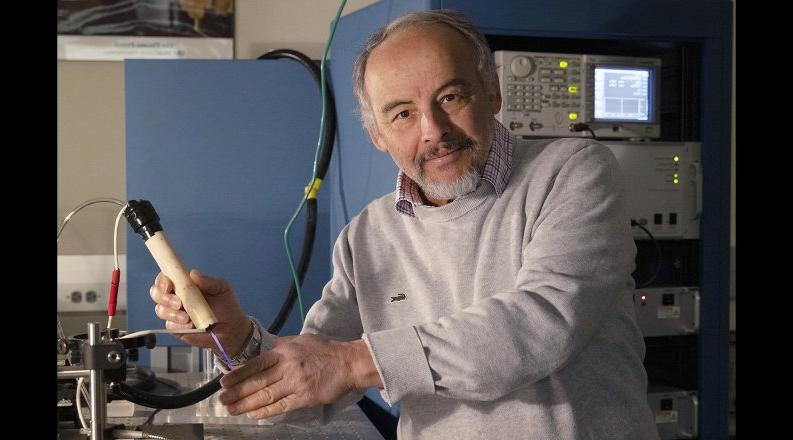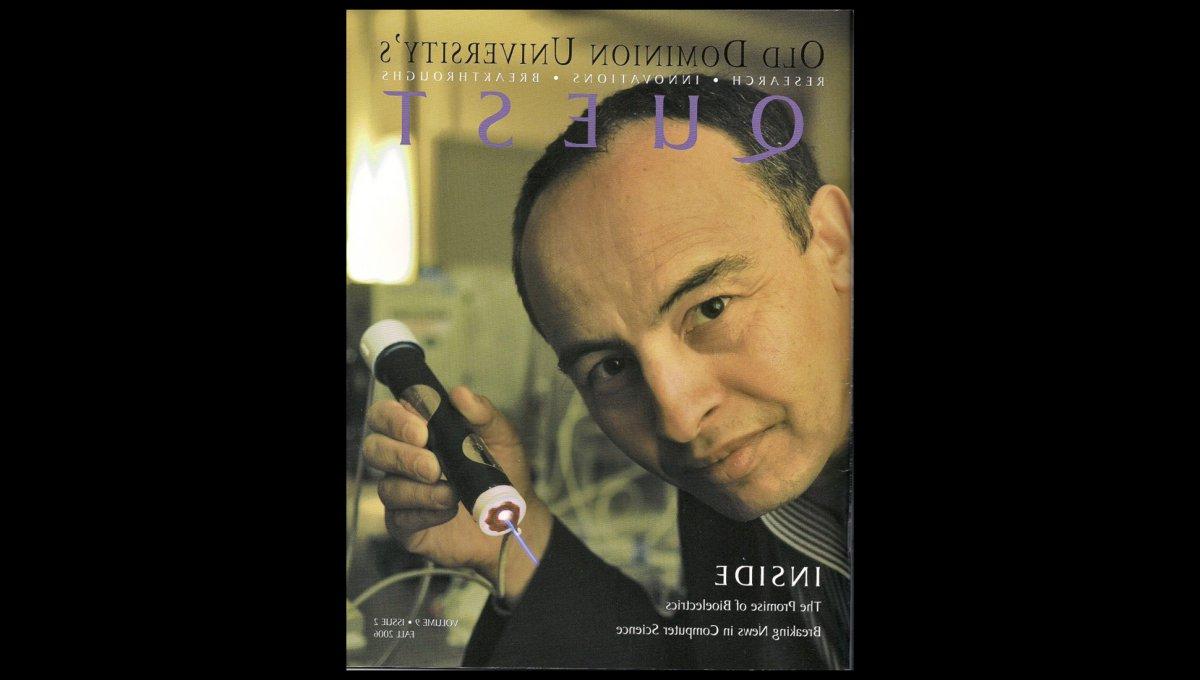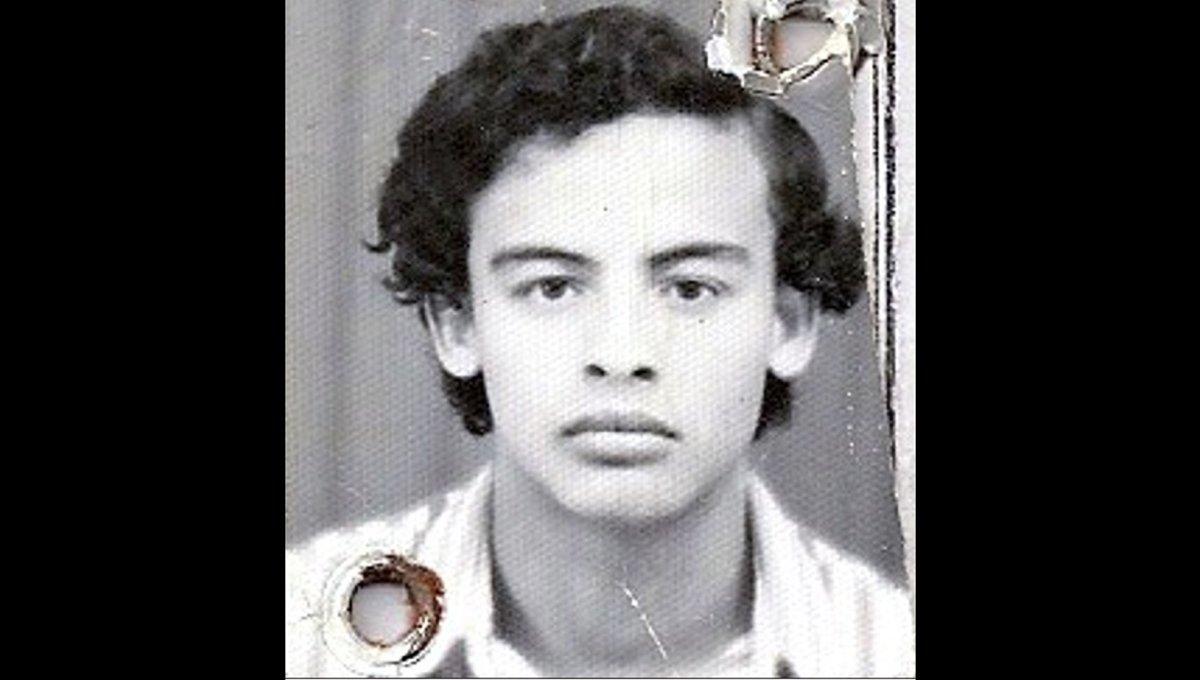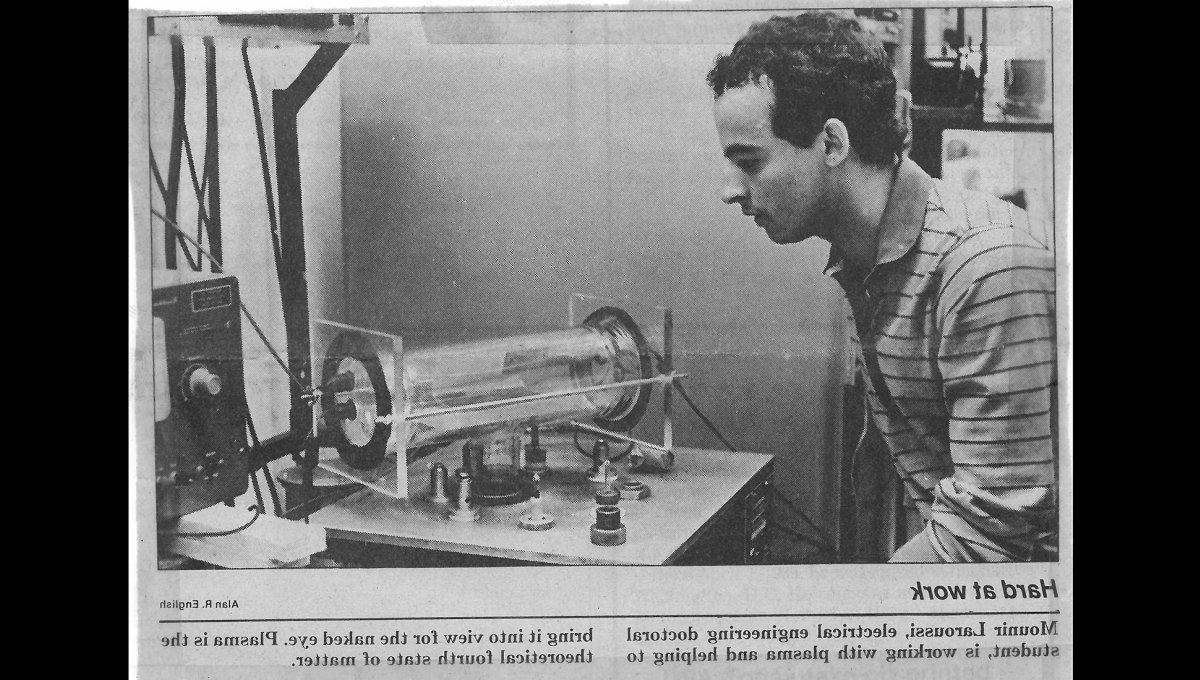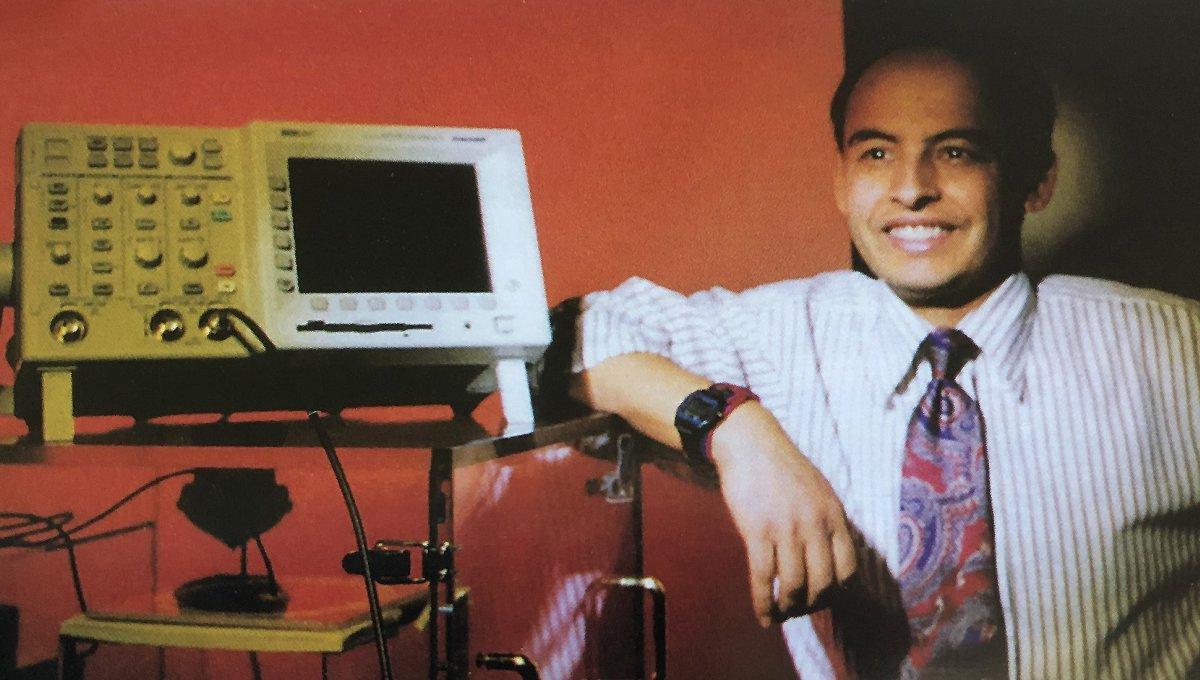By 雪莉DiBari
Mounir Laroussi was a doctoral student at the University of Tennessee in the early 1980s when a lecture about plasma changed his career trajectory.
“这让我大吃一惊. 这太有趣了,”拉鲁斯说. “我当时想,‘哇,我想我找到了我想做的事情.’”
那个讲座,由 Igor Alexeff, 电气工程系的教授, 是拉鲁斯毕生致力于等离子研究的催化剂吗, 特别是, 它在生物医学上的应用.
In May, after 26 years at ODU, he will retire from the 巴顿工程技术学院.
Laroussi的学术和职业之旅开始于4500英里之外.
拉鲁西在突尼斯的斯法克斯长大,这是一座可以追溯到公元849年的历史名城.D.
迦太基人, 罗马, Arabic and French colonization and its location less than 200 nautical miles from Sicily molded Tunisia into a unique blend of an Islamic and Mediterranean culture. “太棒了,”他说. “那真的是一个很棒的地方.”
夏天是在海滩上度过的,踢足球.
拉鲁西也花了很多时间和父亲在一起, 哈比卜Laroussi, 戏剧艺术家, 和其他艺术家在咖啡馆闲逛, 诗人, 作家和画家. “我的梦想是成为一名电影导演,”他说.
然而,他的父亲却有不同的建议.
“听, 我知道你梦想着演艺事业, 但让我从我自己的经验告诉你, 这是非常, 很难做到,他父亲说。.
“你擅长数学和物理,”他说. “你可能会成为一名伟大的科学家,也可能不会,但你仍然有一份工作. 你可以当数学老师或物理老师. 你这样的工作几乎是有保障的,因为你会接受教育.”
Laroussi spent two years at the Ecole Nationale Superieure d’ Electronique et de Radioelectricite de Bordeaux in Bordeaux, 法国. 这是一个密集的项目,类似于美国的硕士学位, 专注于工程和物理.
“第一个 students must do two years of preparatory education of intensive math and physics before applying to engineering school,他解释道.
“当我们开始的时候, 大约有200名大一学生, 我们中只有30人幸存下来,他解释道. “如果你成功了,那么你就可以申请工程专业的一个选择性职位.”
毕业后,他决定要做一些超越一般工作经验的事情. 所以Laroussi, 只懂几个英语单词的人, enrolled in a six-week ESL TOEFL course hoping to apply for a doctoral program in America.
He was accepted at the University of Tennessee – Knoxville, where he studied analog electronics.
直到他看到阿列克谢夫关于血浆的讲座.
讲座结束后,拉鲁西要求到阿列克谢夫的血浆实验室工作. 尽管缺乏研究助理的资金, 由于对这门学科的兴趣,Laroussi自愿免费工作. 最终,Alexeff获得了资金,Laroussi加入了实验室.
正是在那里,拉鲁西开始了他毕生热爱的等离子体研究, 通常被称为物质的第四态.
Laroussi解释说,等离子体占可见宇宙的99%以上. “所有的恒星和星系间物质都处于等离子体状态.”
“The whole universe – you can think of it as this huge ocean of plasma and all the planets are swimming in that ocean,他补充道.
在获得博士学位之后, Laroussi continued his research at UT for a few years before joining ODU’s newly formed 应用研究中心 在纽波特纽斯, 1998年和四年后的弗吉尼亚州, ODU的电气和计算机工程系.
在ARC, 在空军科学研究办公室的资助下, Laroussi继续他使用冷等离子体进行生物净化的工作, 他于20世纪90年代中期在田纳西大学开始了这项研究.
Laroussi began to question if cold plasma could then be used in biomedical applications. 这个问题从未被提及过. “我想知道等离子体对生物细胞有什么影响,”他说. “这完全是出于好奇.”
将细菌细胞暴露于血浆后, 他发现它能有效地杀死细菌,但不会损害哺乳动物的细胞.
Laroussi的研究发表在1996年的《最靠谱的网赌软件》杂志上 等离子体科学汇刊.
“That paper is now widely considered the seed out of which the biomedical applications of cold plasma grew, 1996年也被认为是血浆医学新领域的诞生之年,他解释道.
“我不知道它会打开一个全新的领域,”他说. “事实上, 当时, many of my colleagues (plasma physicists) asked me what in the world I was doing using plasma for "biology" work. It took until 2003 for them to realize that this is maybe something they should get into.”
所有的研究都导致了Laroussi最受欢迎的发明: 等离子体铅笔, a handheld device that uses cold plasma to kill bacteria safely without damaging tissue.
Laroussi在开发该设备的过程中遇到了几个障碍. 主要的挑战是如何冷却等离子体, 一种极热的物质, 到室温而不伤害人体组织.
他想出了如何使用一个独特的电场来保持铅笔的凉爽, 哪个能快速开关. This process energizes the lightweight electrons in the plasma without heating the surrounding gas.
“I worked many years until I finally got the right idea and the right approach,他说.
对于Laroussi来说,该设备还需要具有移动性. “如果你想给病人注射血浆, 你不能把病人放在等离子室里,他解释道. “I wanted something hand-held that the doctor could use to treat either a wound or lesion or in a dental application. 所以,它需要某种手持钢笔或类似铅笔的设备.”
拉鲁西的等离子铅笔曾登上《网上十大网赌娱乐大全》杂志, 历史频道和史密森尼频道. The media outlets touted the device’s potential to kill bacteria and other possible uses in dentistry and dermatology. Laroussi and the plasma pencil were also featured in “Quest,” the research magazine of ODU in 2006.
For his achievements in low-temperature plasma physics and for pioneering their biomedical applications Laroussi was awarded the 2012 Merit Award, 这是由IEEE核与等离子体科学学会颁发的最高技术奖. He was also elevated to the rank of Fellow of the American Physical Society for his groundbreaking contributions to the physics of low-temperature plasma jets and their medical applications.
By the early 2000s, cold plasma was just starting to come into play for biomedical uses. 2003年西西里岛等离子体化学国际研讨会, Laroussi was invited to give a talk on his research applications to nearly 2000 attendees.
In 2005, 应用物理快报, 这是一本由美国物理学会出版的同行评议的科学杂志, 在封面上刊登了拉鲁斯的研究.
He continued to teach and publish in research journals and in conference proceedings – nearly 200 articles in total. 此外,他还与人合著了两本书,包括《 有史以来的第一本书 关于血浆医学的话题.
在退休后, Laroussi will continue to publish professionally and to continue to work on his poetry and short stories – written primarily about his childhood in Tunisia. 他的妻子也有一些家庭项目让他去做.
尽管在事业上取得了成功,但拉鲁西最引以为傲的还是他的家庭. “I think one of me and my wife's best achievements is having our kids grow up as good citizens,他说. “我们能够让他们在没有学生贷款的情况下完成大学学业.”
Professionally, he is proud of his role in the use of cold plasma in biomedical applications. “In the last ten years, most of my efforts here at ODU have been for cancer applications,他说.
The plasma pencil has long evolved and other scientists have designed their own – now they are called low-temperature plasma jets. 今天,世界各地都有专门从事冷等离子体研究的研究所和中心.
“大多数科学家, we're just trying to do the best science we can and to advance the scientific knowledge,他说. “如果你做得好,这就足够了, educate a lot of students and get them to be good scientists and publish good science that people benefit from.”
Laroussi对冷等离子体的未来寄予厚望. He cites contemporary uses in cancer trials, wound healing, dermatology and veterinary care. He also sees the possibility of cold plasma as adjuvant therapy, along with chemotherapy and surgery.
“Cold plasma, you can think of it as just another weapon in the armory of doctors,他说. “有很多治疗方法,也有很多挑战. 多一个武器总是好的,医生可以用它来帮助.”
Dr. Laroussi would like to acknowledge a few individuals who made great contributions to his life and academic career. 第一个, his parents (Habib and Manana Laroussi) and wife (Nicole Mache Laroussi) who supported him unconditionally. 第二,他的导师. 这些是教授. Igor Alexeff(田纳西大学), Knoxville) who got him into plasma physics and guided him early on; Dr. 罗伯特J. Barker (AFOSR) who believed in his ideas and funded much of his work; and Dr. Ulrich Kogelschatz (ABB, Switzerland) a prominent plasma scientist who inspired and encouraged him. 最后, he would like to thank all his students and collaborators who played crucial roles in his research and greatly contributed to its success.



